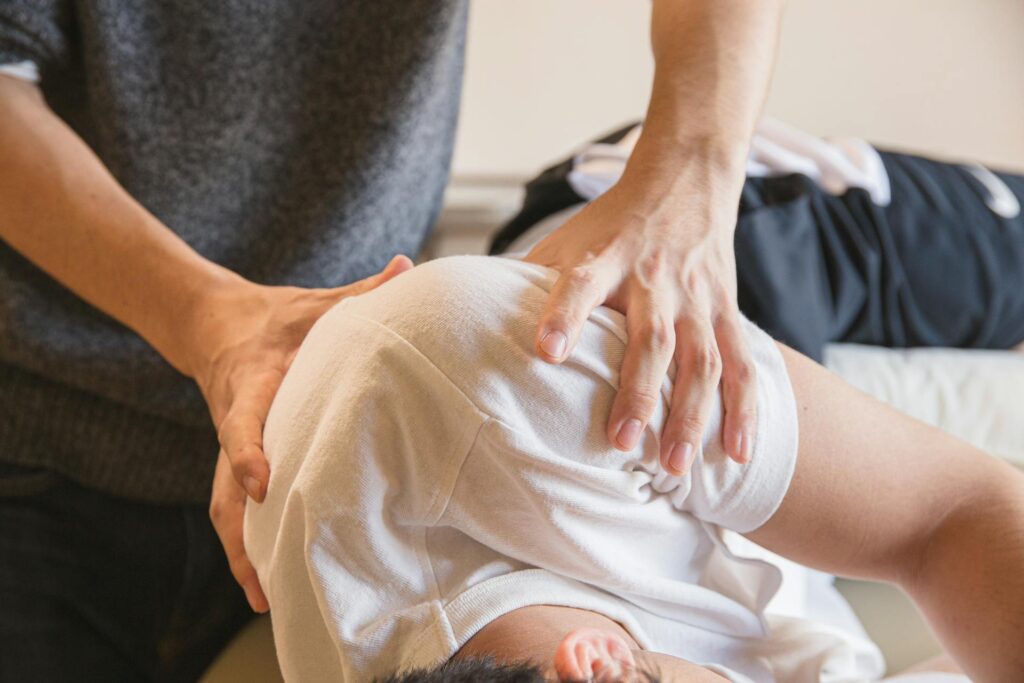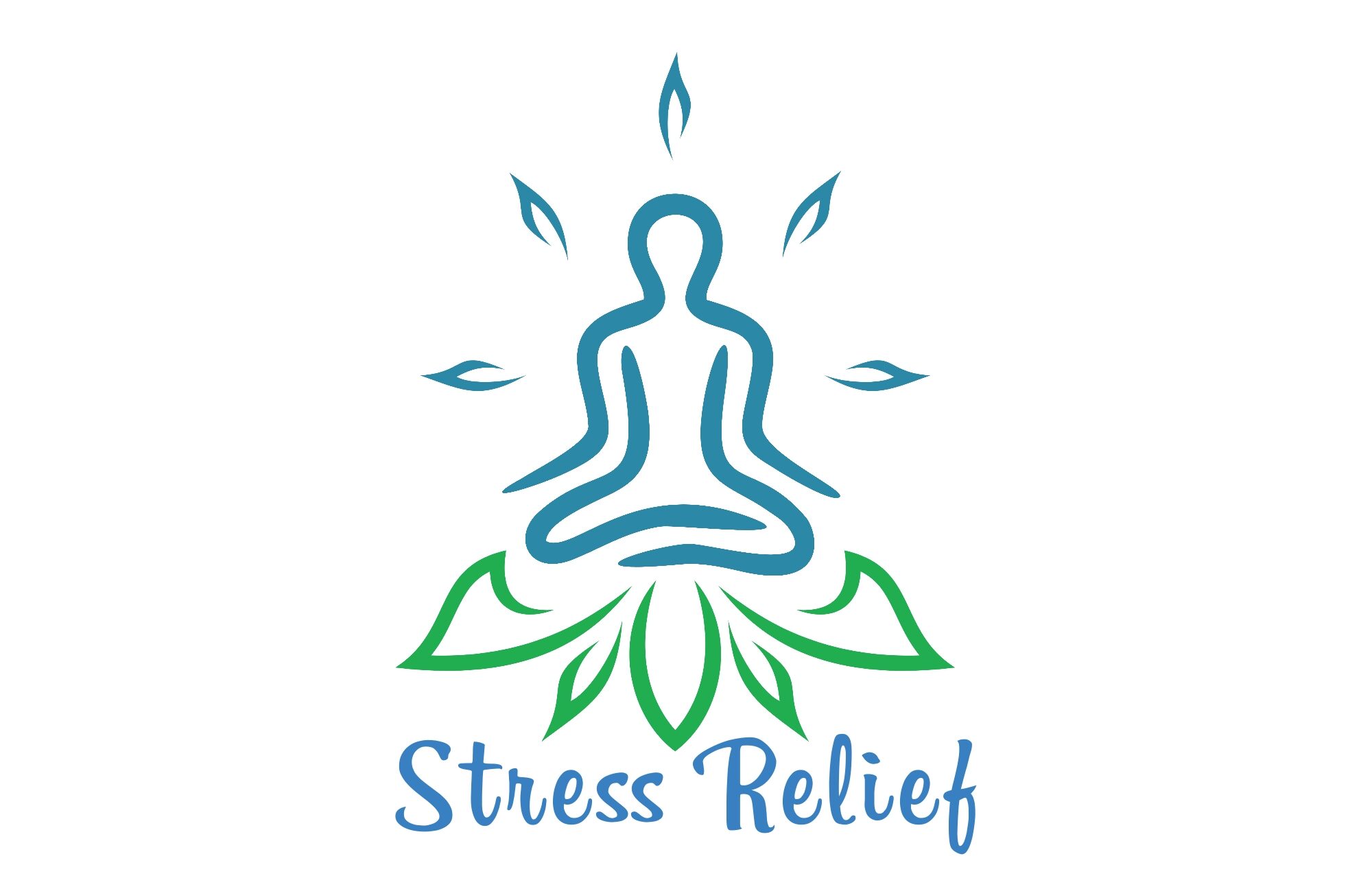Introduction
Living with chronic pain can be incredibly challenging and can have a significant impact on one’s quality of life. Not only does it cause physical discomfort, but it can also lead to emotional distress, contribute to mental health issues and increase stress levels. In fact, there is a strong link between chronic pain and stress, as they often feed off of each other, creating a vicious cycle that can be difficult to break. In order to effectively manage chronic pain, it is crucial to address the stress that accompanies it. This article will explore the importance of stress relief exercise for chronic pain management and provide detailed exercises and techniques to help alleviate both physical and emotional discomfort.
I. Understanding the Link Between Chronic Pain and Stress
Living with chronic pain is not only physically demanding, but it also takes a toll on one’s mental and emotional well-being. The constant presence of pain can lead to feelings of frustration, anger, and helplessness. This emotional distress, in turn, can amplify the pain experience and create a state of chronic stress. The brain and body are intricately connected, and the stress response can further exacerbate pain by increasing muscle tension and inflammation. By understanding this link between chronic pain and stress, we can better appreciate the importance of finding effective stress relief strategies to manage chronic pain.

II. Importance of Stress Relief in Chronic Pain Management
Managing stress is a crucial aspect of chronic pain management. High levels of stress can increase pain sensitivity, making the experience of chronic pain even more intense. Stress can also contribute to negative emotions such as anxiety and depression, further impacting one’s ability to cope with pain. In order to break the cycle of chronic pain and stress, it is essential to prioritize stress relief techniques as part of an overall pain management plan. By reducing stress levels, individuals with chronic pain can experience improved pain control, enhanced mood, and an overall improvement in their quality of life.
III. How Stress Relief Exercise For Chronic Pain Can Help
Stress relief exercises are a valuable tool in managing chronic pain. These exercises can help to calm the mind, relax the body, and alleviate the physical and emotional symptoms associated with chronic pain. By practicing stress relief exercises regularly, individuals can develop coping mechanisms that allow them to better manage their pain and reduce their stress levels. Let’s explore some effective stress relief exercises that target both the mind and body.
A. Exploring Mind-Body Techniques
- Deep Breathing Exercises: Deep breathing exercises are a simple but powerful technique for calming the mind and relaxing the body. By focusing on slow, deep breaths, individuals can activate the body’s relaxation response, which helps to reduce muscle tension and promote feelings of calmness and well-being.
- Progressive Muscle Relaxation: Progressive muscle relaxation involves systematically tensing and relaxing different muscle groups in the body. By engaging in this exercise, individuals can become more aware of muscle tension and learn to release it consciously. This helps to promote physical relaxation and can provide relief from chronic pain.
- Guided Imagery and Visualization: Guided imagery and visualization involve using the power of imagination to create a peaceful and calming mental image. By visualizing a place or situation that brings about feelings of relaxation and well-being, individuals can help to alleviate both physical and emotional discomfort.
B. Practicing Mindfulness Meditation

- Mindful Breathing Techniques: Mindful breathing techniques involve bringing one’s attention to the present moment and focusing on the sensations of the breath. By practicing mindful breathing, individuals can cultivate a sense of calm and reduce the impact of stress on their pain experience.
- Body Scan Meditation: Body scan meditation involves systematically scanning the body from head to toe, paying attention to any areas of tension or discomfort. By bringing awareness to these areas, individuals can practice self-compassion and release muscle tension, thereby reducing pain and stress.
- Mindful Movement Exercises: Mindful movement exercises such as yoga and tai chi combine gentle physical movements with focused attention on the breath and body. These exercises promote relaxation, improve flexibility, and can be effective in managing chronic pain by reducing stress levels.
C. Utilizing Biofeedback Therapy
- Understanding Biofeedback: Biofeedback is a technique that involves using electronic monitoring devices to provide individuals with real-time information about their physiological responses, such as heart rate and muscle tension. By becoming aware of these responses, individuals can learn to regulate their bodily functions and reduce pain and stress.
- Biofeedback Techniques for Pain Management: Biofeedback techniques for pain management include techniques such as electromyography (EMG) biofeedback, which measures muscle tension, and thermal biofeedback, which measures skin temperature. By using these techniques, individuals can gain control over physiological responses and reduce their experience of chronic pain.
- Benefits and Limitations of Biofeedback: Biofeedback therapy offers several benefits, including being a non-invasive and drug-free approach to pain management. However, it may not be suitable for everyone and may require specialized equipment and trained professionals. It is important to consult with a healthcare provider before attempting biofeedback therapy.
IV. Physical Exercises to Alleviate Chronic Pain and Stress
Physical exercises play a crucial role in managing chronic pain and reducing stress levels. Engaging in regular physical activity can help to improve blood flow, strengthen muscles, and release endorphins, which are the body’s natural painkillers. Let’s explore some effective physical exercises for alleviating chronic pain and stress.
A. Low-Impact Aerobic Exercises
- Walking and Nordic Walking: Walking is a low-impact exercise that can be easily incorporated into daily routines. Nordic walking, which involves using poles to engage the upper body, can provide additional benefits by promoting proper posture and distributing weight more evenly.
- Cycling and Water Aerobics: Cycling, whether on a stationary bike or outdoors, is a low-impact exercise that can strengthen leg muscles and improve cardiovascular fitness. Water aerobics, conducted in a pool, offers the added benefits of buoyancy, which reduces pressure on joints and provides gentle resistance.
- Tai Chi and Yoga: Tai Chi and yoga are ancient practices that combine gentle movements with deep breathing and mindfulness. These exercises promote flexibility, strength, and balance, while also calming the mind and reducing stress.
B. Strengthening and Stretching Techniques

- Resistance Training and Pilates: Resistance training involves using resistance bands or weights to strengthen muscles and improve overall body strength. Pilates, which focuses on core strength and stability, can also be beneficial in managing chronic pain by improving posture and reducing muscle imbalances.
- Core Strengthening Exercises: Core strengthening exercises target the muscles of the abdomen, back, and pelvis. By developing a strong core, individuals can improve their posture, reduce back pain, and enhance overall physical function.
- Flexibility Exercises for Pain Relief: Stretching exercises can help to improve flexibility, decrease muscle tension, and alleviate pain. Gentle stretching routines that incorporate static stretches and gentle movements can be particularly effective in managing chronic pain and reducing stress levels.
C. Aqua Therapy for Stress Relief
- Benefits of Aquatic Exercises: Aquatic exercises, performed in a pool, offer a unique and effective way to alleviate chronic pain and reduce stress. The buoyancy of the water reduces pressure on joints and allows for gentle resistance, making it an ideal low-impact exercise option for individuals with chronic pain.
- Specific Aquatic Exercises for Chronic Pain: Specific aquatic exercises that can be beneficial for chronic pain management include water walking, aqua yoga, and aqua aerobics. These exercises help to improve strength, flexibility, and cardiovascular fitness while providing a soothing and calming effect.
- Safety Precautions for Aqua Therapy: It is important to consult with a healthcare provider before beginning aqua therapy, especially for individuals with specific health conditions or limitations. Additionally, ensuring proper pool safety measures and following guidelines provided by trained professionals is essential for a safe and effective aquatic exercise experience.
V. Holistic Approaches for Stress Relief and Chronic Pain Management
In addition to stress relief exercises and physical activity, holistic approaches can be invaluable in managing chronic pain and reducing stress levels. Let’s explore some holistic approaches that can provide additional relief for individuals living with chronic pain.
A. Acupuncture and Acupressure
- How Acupuncture Alleviates Pain and Stress: Acupuncture involves the placement of thin needles at specific points on the body. It is believed to stimulate the nervous system, release endorphins, and promote a sense of relaxation, thereby reducing both pain and stress.
- Acupressure Points for Chronic Pain Relief: Acupressure involves applying pressure to specific points on the body, similar to acupuncture. Some commonly targeted acupressure points for chronic pain relief include the LI4 point between the thumb and index finger for headaches, the GB20 point at the base of the skull for neck pain, and the LV3 point on the top of the foot for lower back pain.
- Finding Qualified Practitioners: When seeking acupuncture or acupressure treatments, it is essential to find qualified practitioners who are licensed and experienced. It is important to research and seek recommendations from trusted sources to ensure safe and effective treatments.
B. Massage Therapy

- Different Types of Massage for Pain Relief: There are various types of massage therapy that can provide relief for chronic pain. Swedish massage, deep tissue massage, and trigger point therapy are some examples of techniques that can help to reduce muscle tension, promote relaxation, and alleviate pain.
- Benefits of Massage Therapy for Stress Reduction: Massage therapy not only provides physical benefits but also helps to reduce stress levels and improve overall well-being. The soothing touch and gentle manipulation of the body can trigger the release of endorphins, promote better sleep, and alleviate anxiety and depression.
- Precautions and Considerations for Massage: It is important to consult with a healthcare provider before starting massage therapy, especially for individuals with specific health conditions. Additionally, it is crucial to communicate openly with the massage therapist regarding areas of pain, discomfort, or sensitivity.
C. Herbal Remedies and Natural Supplements
- Understanding Herbal Remedies for Pain Relief: Herbal remedies have been used for centuries to alleviate pain and promote healing. Examples of herbal remedies that can provide relief for chronic pain include devil’s claw for arthritis pain, turmeric for inflammation, and lavender for headaches and migraines.
- Supplements for Stress Relief and Pain Management: Natural supplements can also play a role in managing chronic pain and reducing stress levels. Supplements such as omega-3 fatty acids, magnesium, and valerian root have been found to have calming effects and can help with pain management.
- Consultation and Safety Guidelines for Herbal Use: It is important to consult with a healthcare provider or herbalist before starting any herbal remedies or supplements. They can provide guidance on appropriate dosages, potential interactions with medications, and safety considerations.
VI. Lifestyle Changes to Support Stress Relief and Pain Management
In addition to incorporating stress relief exercises, physical activity, and holistic approaches, making lifestyle changes can greatly support the management of chronic pain and reduce stress levels. Here are some important changes that individuals can make to enhance their well-being and overall pain management.
A. Healthy Sleep Habits
- Importance of Quality Sleep for Pain Management: Getting enough quality sleep is essential for managing chronic pain. Sleep allows the body to rest, repair, and regenerate, which can help to reduce pain and inflammation. It also plays a vital role in emotional well-being and stress reduction.
- Establishing a Sleep Routine: Creating a consistent sleep routine is important for promoting healthy sleep habits. This includes setting a regular bedtime and wake-up time, creating a calming bedtime routine, and creating a sleep-friendly environment.
- Tips for a Restful Night’s Sleep: Some tips for achieving a restful night’s sleep include avoiding stimulating activities close to bedtime, limiting caffeine and alcohol intake, maintaining a comfortable sleep environment, and managing stress levels before bed.
B. Balanced Diet and Nutrition

- Foods That Reduce Inflammation and Stress: A balanced diet that includes foods rich in antioxidants, omega-3 fatty acids, and anti-inflammatory properties can help to reduce inflammation and alleviate pain. Examples of such foods include fatty fish, dark leafy greens, berries, and nuts.
- Nutritional Tips for Managing Chronic Pain: It is important to eat a nutrient-dense diet that includes a variety of fruits, vegetables, whole grains, lean proteins, and healthy fats. Drinking plenty of water and limiting processed foods, added sugars, and alcohol can also support pain management and overall well-being.
- Consultation with Dietitian or Nutritionist: Working with a dietitian or nutritionist can be beneficial in developing a personalized dietary plan that supports pain management and overall health. These professionals can provide guidance on specific dietary needs and help individuals navigate any dietary restrictions or food sensitivities they may have.
C. Stress Management Techniques
- Prioritizing Self-Care: Practicing self-care is essential for managing stress and promoting overall well-being. This can include engaging in activities that bring joy and relaxation, such as reading, listening to music, spending time in nature, practicing hobbies, and taking time for oneself.
- Relaxation Techniques for Stress Reduction: Engaging in relaxation techniques such as taking warm baths, practicing deep breathing exercises, and participating in activities that promote relaxation and mindfulness can help to reduce stress levels and alleviate chronic pain.
- Seeking Emotional Support: Chronic pain can have a significant impact on mental and emotional well-being. Seeking support from friends, family, or a mental health professional can provide individuals with a safe space to express their feelings, learn coping strategies, and gain a sense of emotional support.
Conclusion
Alleviating chronic pain and reducing stress levels requires a multifaceted approach that addresses both the mind and body. Stress relief exercises, physical activity, holistic approaches, and lifestyle changes all play a crucial role in managing chronic pain and promoting overall well-being. By incorporating the detailed exercises and techniques outlined in this article, individuals can develop a personalized and comprehensive pain management plan that supports their unique needs. Remember, consistency, individualization, and a holistic approach are key to achieving long-term relief and improved quality of life.




